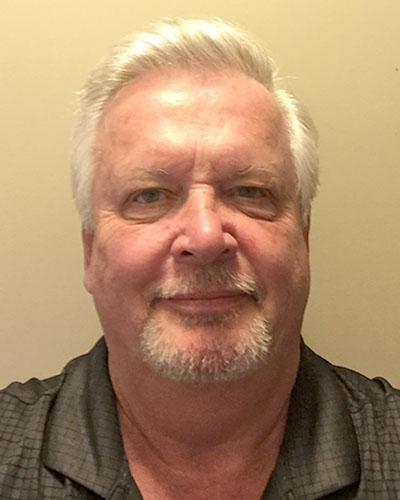
My story began in 2003, when I needed to find a new civil aviation doctor to do my annual medicals to maintain both of my Air Traffic Control and Commercial Pilot licenses. I was 51, and my GP advised me that I should be doing an annual DRE – Digital Rectal Exam) and PSA (Prostate Specific Antigen blood test. At that moment I didn’t know what those terms meant.
As result of my short but effective education, I knew that the prostate was normal, and the PSA count was low at 4.0, apparently appropriate to my age. Dr. Wayne advised that we would monitor the PSA value. No worries. I was quite comfortable with Wayne – we were both pilots and avid motorcyclists. About the time of COVID, Wayne retired from his practice and I was left to find a new GP. In the final year with him my PSA came in at 6.4, a notable change In 2022 I had a new GP, Dr. Taylor, who immediately sent me for a PSA test which came in at 8.4. Together we opted for “wait and watch” although she was beginning to talk Urology, MRI and biopsy. (I knew these terminologies. I added one more: “Trepidation” )
I had been involved in the Edmonton Motorcycle Ride For Dad (RFD) since 2013. The mission of RFD is to raise funds to support research, education and awareness of prostate cancer. Funds raised by RFD events across Canada stay in the funding community. Today I remain a strong RFD supporter and fundraiser for the fight against prostate cancer.
A beneficiary of RFD was the Alberta Prostate Cancer Initiative, and an associated lab called Nanostics. Nanostics was developing a new prostate diagnostic blood test to be called Clarity DX. With my elevated PSA, I was able to convince Dr. Taylor to wait for Clarity DX to be available. In October of 2023, ClarityDX became available to the public and I was fortunate to be among the first to have the new blood test. The result: “an 84% chance of having clinically significant prostate cancer. “ Dr. Taylor reacted accordingly with a referral to urology at the Kipnes Centre. I was on my way.
From March to July of 2024, I was waiting for appointments: MRI in March, biopsy in June and diagnosis of prostate cancer in early July. So, the October 2023 ClarityDX profile was confirmed. I was very fortunate as the cancer was caught early. I had two lesions, both “floating” clear of the prostate casing. Next was determination of treatment.
Due to my age (72) removal of the prostate was not an option. Two viable options remained. Cryotherapy – freezing/killing the cancer – was rejected in favour of external radiation. External radiation was chosen for its simplicity and effectiveness.
In January and February of 2025, with a new PSA of 13.8, I attended the Cross Cancer Institute for 20 fractions of external radiation therapy. Post radiation, and after 5 weeks of recovery, I was well, with no after affects, and eager to enjoy the open road on my motorcycle.
In June of 2025 a PSA test revealed a value of <0.1 ug/l. Great news ! Now, I and my family can relax, but remain vigilant. Next on the program is a schedule of regular PSA tests through the Cross Cancer Institute.
I am always open for contact and assisting in any way I can. Talking about this insidious cancer, encouraging others to get checked and sharing our experience and knowledge are all keys to effectively supporting each other.

I was diagnosed with a high PSA count in 2007. Unfortunately, Dr Nancy failed to call and advise me. I also failed to follow up with and call the Doctor.
In 2011, my GP, Dr Jim conducted a DRE (digital rectal examination) better known as “bend over” while he inserts his finger in my rectum to feel the state of my prostate. Dr Jim’s comment “nice firm prostate Terry”. I take his requisition for the lab work to be completed. My wife, the nurse, suggests he forgot to check off the PSA test on the requisition. I relate Dr Jim’s nice firm prostate comment – hence the PSA test is not required. She is a bit insistent that I should mark the test myself. I am a bit reluctant as Dr. Jim is a very religious man and I would feel like I was cheating on him. She is persuasive and I concede.
Lab visit concluded. The lab personnel call the next day and request I return as they think they have a false PSA reading. Second test concluded. Unfortunately, the test result was not an error. My PSA test is 30. A PSA number over 4 or 5 usually land you in a urologist office. With remarkable haste, I end up in Dr. Ron the urologist’s office. Of course, I then experience my second DRE test. As Dr Ron pulls out, I share my GP’s comments that Dr Jim states I have a nice firm prostate. Dr Ron says – “oh yes, it is very firm– way to firm – you have a serious problem here Mr. Kirkland”. Off I go for a prostate biopsy. I now have my 3rd rectal intrusion when they insert a probe up the anus. Didn’t see that coming. While inserted, the probe shoots 12 or 13 needles into the prostate to remove samples for examination. After examination of the samples by a pathologist, I am graded a 9 on the Gleason scale, of which does not exceed 10. Not Good at all. I am learning I am woefully uneducated on the prostate, and its threat to my life. Radical open prostatectomy performed (as opposed to a DaVinci Robotic operation) and Dr Ron collects some lymph nodes while digging around. The healing starts in preparation for radiation treatment to the prostate bed to ensure any little bits of cancer are not still alive. As an extra measure of treatment, Dr Ron prescribes Eligard to kill my testosterone production which is the feeder of prostate cancer. All these attacks on my plumbing leaves me without sexual function. My vanity drives me to embrace a penile implant. 10 years later I am still enjoying sunrise and sunsets.
You may note a couple of medical gaffs in my journey. They were compounded by my failure to educate myself. Hence my attempt to raise awareness. I am comfortable chatting about the entire journey.

My prostate cancer journey began in June of 2014, when the results of an annual check up showed a PSA score of 7.3. This led to an examination by a urologist to confirm a tumor (Sept 2014), followed by a biopsy, CT scan, and a bone scan by the end of October 2014. I was 62 years of age and damn it, no question that I had prostate cancer and would now have to follow up with treatment. I had positive cancer showing in 11 of 12 cores of the biopsy and a Gleason score of 7.
The next step was deciding on treatment. After talking to friends who had the robotic surgery, I had decided that would be the way that I would go also. In November of 2014, I was referred to Dr. H, who had a great reputation for successful robotic surgery. He wanted a more detailed look at the area and so requested an advanced MRI which unfortunately showed that my cancer had escaped the capsule and also that my tumor was too close to my intestine. This would make the surgery very risky and eliminate that as a treatment option. He did start me on ADT (androgen deprivation therapy – Eligard) to somewhat control the growth of the cancer by starving its fuel source – testosterone. I was to continue with Eligard for a few months before my radiation.
May 2015 – On to Cross Cancer Clinic and 39 sessions of radiation along with the Eligard and I completed the treatment in June. I was fortunate in having no side effects from the radiation. A quick note on side effects: Eligard – hot flashes were the most irritating as they occurred about every 2 hours and make an uninterrupted night’s sleep impossible – but I adapted with a newly installed ceiling fan. My wife asked me why I didn’t do this when she had hot flashes during menopause – oops – no good answer there. I did also lose body hair and gain a bit of weight. I countered the weight gain by swimming 3 to 4 times a week and walking daily.
August 2015 my PSA measured .2 and I felt on top of the world. It became a waiting game now with the question being – Did they get it all or not?. In any case the doctors at CCI wanted me to stay on Eligard for a year following radiation.
August 2016 – PSA = .1 – whoopee- hanging in there and going off of Eligard.
August 2017 – PSA =.7 – oh oh, PSA is starting to move up.
Ok, let’ speed up to August 2021 – my PSA = 4.4 and my oncologist and I have decided to put me back on Eligard.
August 2022 – My current state is considered to be “biochemical reoccurrance” meaning that the cancer is still in my body (indicated with rising PSA) and the treatment (radiation) didn’t get it all. I am a candidate for “intermittent hormone treatment” most likely for the rest of my life. This means that if all goes well, I will likely go on and off of Eligard. My last PSA reading was .57 so that is great news and I hope to go off of Eligard this September. When it inevitably climbs to 4.5 again, I will go back on Eligard.
Final comments: My experience is that we are blessed to have such amazing medical care in this province – the doctors, technicians, nurses, Cross Cancer Institute. Having prostate cancer really makes you appreciate the beauty of each day. Also, having a wonderful supportive partner walk the journey with you is invaluable. Live each day to the fullest and spend time with the ones you love! Good luck in your journey.

At 50 years old I was diagnosed with having Prostate Cancer. My journey began with having urinary tract symptoms for 10 years treated with medications of many antibiotics to ease prostatitis conditions, including Keflex, Septra not to mention Flomax…perhaps others I cannot remember. They, the doctors were fighting possible infections in my prostate gland and the difficulty that I had voiding.
I requested my GP to refer me to a Urologist which in turn sent me for medical procedures and tests like Cystoscopies and a transrectal – guided Biopsies of the prostate gland and numerous blood work. The result was low risk carcinoma of the prostate with 2 of the 6 regions biopsied cancerous.
I had clinical stage T1c, Gleason score of 6 (3 + 3) and a PSA of 5.2. So the end result was that I had cancer but early stage. At this point the Doctors recommended me these treatments, watchful waiting (do nothing and monitor PSA levels), an open radical prostatectomy, a robotic-assisted laparoscopic radical prostatectomy, radiation therapy both external beam and brachytherapy, cryosurgery, and HIFU. This was a lot to handle and absorb but I read extensively and came down to a conclusion which would be I want it out so I opted for Robotic assisted Laparoscopic radical prostatectomy. It was big words in my vocabulary! This did not come without its risks and side effects such as injury to bladder, ureter, rectum and pelvic vasculatures, loss of erection along with the possibility of short and/or long term incontinence.
At 51 years old, I had the surgery on March 2, 2009 at the Royal Alexander Hospital performed by Dr. Eric Estey. It was a successful surgery with an undetectable PSA of < .1 ug/L and going on 13 years. This would be the end of making babies, but fortunately my wife and I had all that we wanted. That was my Happy ending!

My journey began in 2008 (50 years old). My wife insisted that it was time I started seeing a doctor regularly for an annual checkup. I followed her advice and had my first PSA blood test. It was slightly elevated according to my doctor and he suggested that we watch to see if it progressed.
Over the next few years the number continued to increase in small increments until in 2013 I had a 6-month period where my score went up about 20%. This was a red flag for my doctor who referred me to my urologist who then sent me for biopsies which came back with 7 of 12 samples cancerous with one sample being 70% cancer.
I did the bone scan and began planning next steps. I opted for Robotic Laparoscopic Radical Prostatectomy. I was scheduled for surgery Dec 3, 2013 and expected an 8-week recovery period. So, in preparation, I had handed off all of my projects at work.
Dec 2, 2013, 1:30 PM, my phone rings to inform me that the machine for the surgery had broken one of its arms that morning and that my surgery would be deferred indefinitely. This was probably the most mentally stressing day of this whole journey.
About a week later I was called and informed that my surgery had been rescheduled to Jan 3, 2014, so a month delay. Surgery went well and a couple days later, I was discharged. Recovery went very well. My urologist released me Dec 2021 and suggested I just get my GP to order a PSA test once a year to monitor for any changes.
I now am completely clear over 8 years later.

I was diagnosed with prostate cancer and treated with H.I.F.U. in 2009. Today with the help of Jesus I remain healthy.

My prostate cancer journey began in 2010 when I decided that a full physical exam was very overdue. All of the lab results were within normal ranges, except my GP said the PSA was a little high for my age. He did the dreaded digital rectal exam (DRE), and said the prostate felt normal, but still referred me to a urologist.
First thing the urologist did was a DRE. He said “You have a lump in the left side of the prostate. We need to get a biopsy.” After that unpleasant, but not painful, procedure I received the news that it was cancer; Gleason 6 in only part of the prostate. That urologist wasn’t doing cancer treatments, and was soon retiring, so he referred me to another: Dr. Jacobsen.
Since the cancer was not very advanced, we decided to do Active Surveillance. PSA tests, DRE, and biopsies continued for 2 years. Then the PSA started going up, and the next biopsy showed the cancer was spreading throughout the prostate. It was time for a decision. After talking to urologist and radiologist and attending some support group meetings I decided to proceed with a robot assisted prostatectomy.
The surgery went well, with no positive margins on the removed gland. PSA went down to “undetectable” and has stayed there. Partial incontinence gradually resolved. But erectile dysfunction (ED) has been a continuing problem.
For about 7 years I was using the various ED drugs, with gradually reducing results. Finally they just stopped working for me. So I went back to my urologist and asked what to do. He suggested trying the Trimix penis injections. It was amazing how well it works, once I got over the fear of needles.
If you have any questions about what you face with a prostate cancer diagnosis, feel free to ask me anything.
